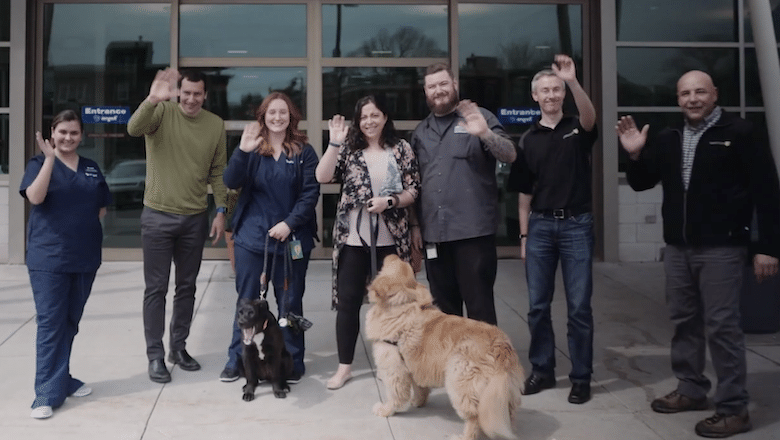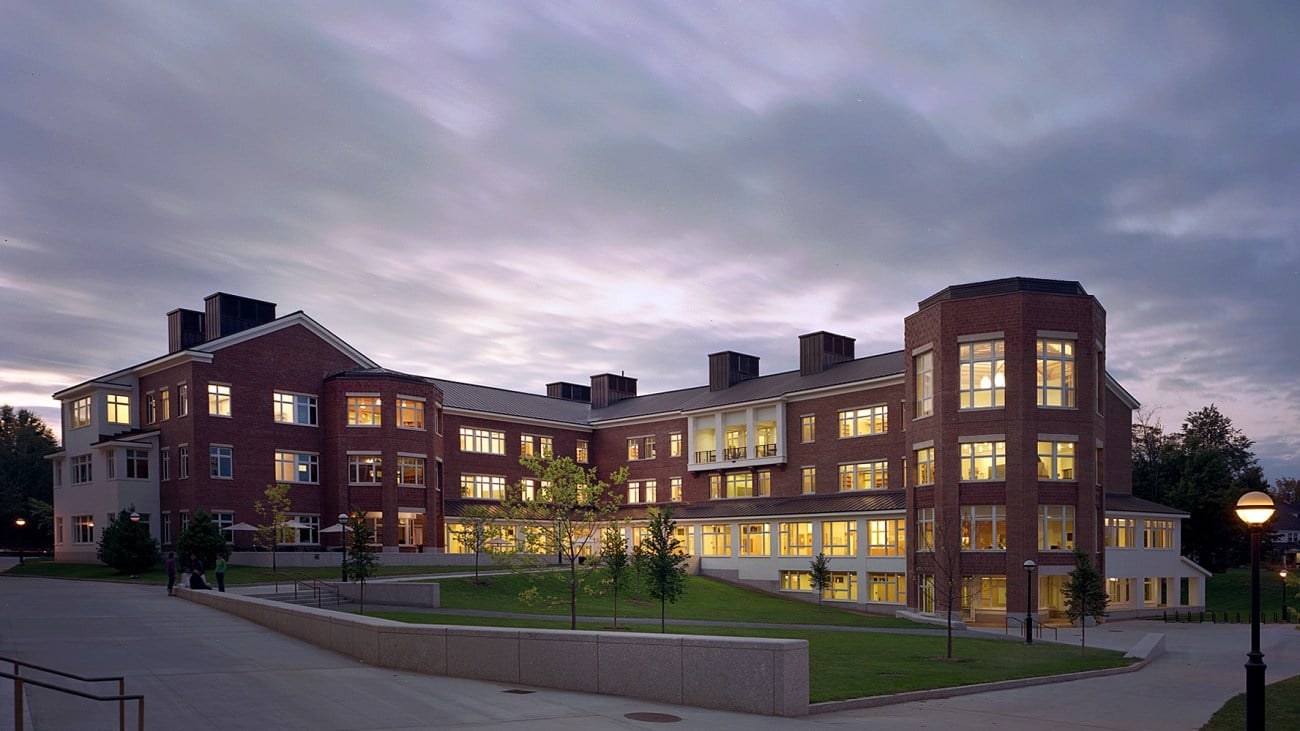Posts tagged: energy efficiency
Vibrant. Exhilarating. Complicated. Messy.
We're not talking about your love life. We’re talking about working in an institutional setting, where getting things done is no simple task. If you’re looking at launching a major initiative, an interdepartmental project, or moving forward with your climate action goals, you need to draw from a different toolkit than your job description outlines—you need to be persuasive.
MoreClimate change mitigation, energy efficiency, decarbonization, construction project management—it all boils down to a simple formula: helping people.
MoreIsabella Stewart Gardner was famously precise in her vision and oversight of her museum’s creation. GreenerU is helping this masterpiece of an institution in meeting its sustainability goals—both in working toward climate neutrality and in operating the museum in perpetuity.
MoreIn Brookline, on the edge of Boston, the Dexter Park apartments are ideally situated for students, museum-goers, movie-lovers, and classical music aficionados. They are also an example of forward-thinking energy-efficiency measures.
MoreDeadline extended for the expenditure of remaining funds available through GreenerMass, a program offering capital for energy-efficiency projects requiring no up-front costs to institutions
MoreUnderstanding the ins and outs of financing major energy and sustainability projects is not everyone's strength. But getting more familiar with the different, sometimes creative ways you can help your institution figure out how to pay for efficiency and renewables could make a difference. This presentation was designed to help you develop more familiarity with the terms, the pros, the cons, and the contingencies to make conversations with your institution's CFO go more smoothly.
MoreAs institutional campuses are exploring ways to draw down greenhouse gas emissions, one of the largest sources of ongoing emissions is heat via fossil fuels. Many campuses use steam, a century-old technology that relies on coal, natural gas, or nuclear energy to heat water into steam that is piped through buildings through radiators. But technology has greatly advanced to the point of requiring nearly ambient-temperature water to heat our buildings. Moving toward climate neutral means moving away from these old technologies, specifically to electricity-powered systems that can be fueled by renewable sources.
MoreFrom college presidents to the U.S. President, there is a growing drumbeat from leadership nationwide to address the climate crisis. The general consensus is that the path to mitigating climate change is clear: achieving climate neutrality. This article is a look at the current state of climate neutrality efforts, challenges, and solutions on college campuses.
MoreAs any sustainability professional is aware, navigating the steps to climate neutrality is like putting together a 7,500-piece jigsaw puzzle with no edge pieces. Technical solutions abound, but the roadblocks are many: financing, technical feasibility, political will, staffing and bandwidth, and stakeholder support are just a few. On April 14, 2021, GreenerU hosted a discussion with representatives from independent schools, public and private colleges, and nonprofits about navigating the steps to climate neutrality.
More“We are now doing capital planning more intentionally than ever, and sustainability has become a default factor in those projects.” —Mary Fischer, manager of sustainability programs
MoreAs the coronavirus shutdown has threatened nonprofits’ funding, opportunities to find cost savings are more important than ever. Simultaneously, Boston-based nonprofit institutions are striving to meet the City’s carbon neutrality goals. But installing energy-saving measures can require investments that many nonprofit institutions are unable to make.
Now, Boston nonprofits can take advantage of an affordable energy-savings program with no up-front costs, thanks to the tax-exempt lease program (TELP) of the Boston Industrial Development Financing Authority (BIDFA). As an approved performance contractor of the program, GreenerU can work with museums, universities, healthcare centers, and other 501(c)(3) entities to identify and implement comprehensive energy upgrades.
On Wednesday, December 9, 2020, GreenerU's David Adamian, BIDFA's Bill Nickerson and Gisella Soriano, and the City of Boston's Brenda Pike presented an information session on TELP. You can watch the webinar below or click on links in the additional resources for more information.
MoreWhether through turnkey energy solutions or owner’s project management, GreenerU’s eye for detail, customer-first service, and communication style keeps the trains running on time.
MoreAlthough research suggests that sustainability-related giving opportunities grow the pie by expanding giving, development officers have been understandably reluctant to move in that direction for fear of diverting precious donations from pressing operational and capital needs. The Benefactor Investment Model (BIM) solves this tension by creating an investment opportunity for high-net-worth friends of the institution that: provides a reasonable return on their investment, benefits the institution financially, and helps the institution make meaningful progress on its sustainability goals.
On Tuesday, October 13, 2020, GreenerU's David Adamian and EcoMotion's Ted Flanigan and Mark Hopkinson teamed up to present this new financing mechanism. Learn more in the video below.
MoreHere’s how one university has joined their reputation for excellence in dining with an efficient sustainability metric tracking system through community-distributed responsibility—and won awards for both.
MoreGreenerU to replace an obsolete energy management system for the Newton-based private school for undergraduate and graduate degrees in psychology
Program funds still available for Massachusetts nonprofit institutions
MoreCampus shutdowns through the coronavirus outbreak have brought questions and concerns about health and safety procedures and occupancy involving ongoing building maintenance, energy conservation, and ongoing construction. With situations changing on an almost hourly basis, how can campus facilities stay up to speed? How are you managing the forced hibernation of buildings that were designed to be 24/7 operations? How will you transition out of this crisis? Colleges and independent schools in the Northeast met on April 9, 2020, for a facilitated discussion on how to respond to campus facilities challenges during the coronavirus outbreak.
MoreThanks to help from GreenerU, the MSPCA’s Angell Medical Center in Jamaica Plain is set to receive the first alternative energy certificates for a large air-source heat pump system—one of several ways energy-efficient technologies are sound financial investments. Maybe now is a good time for your school to make the switch.
MoreOver more than 200 years, one Ivy League medical school has launched some of the most important discoveries in history. Now it’s investigating ways to make its campus buildings perform better and use less energy...much like the squirrels they study.
MoreNearly 4 million people participated in worldwide climate strikes last September, in solidarity with 17-year-old Swedish activist Greta Thunberg, who made the trek to New York City across the Atlantic by boat. It’s no coincidence that teenagers are some of the most engaged climate activists today. How are their schools rising to the challenge?
MoreIn 2014, GreenerU worked with MassDevelopment to develop a program called Mass College Green, in which up-front financing was provided to pay for energy conservation measures. With no upfront capital investment, the college pays only for delivered energy savings over a five-year financing period and sees a net positive cash flow, resulting from energy cost savings. After the five-year payback period, the college will enjoy even greater cost benefits, realizing the entirety of the energy cost savings.
MoreMassachusetts may enact the first state-wide legislation requiring that buildings comply with minimum energy performance standards. Find out if your institution's buildings are affected.
MoreIn 2016, in partnership with Consigli Construction Co., Brooks School began planning its brand-new Center for the Arts and right from the beginning involved GreenerU in all mechanical and electrical aspects of the design, including an enabling project that included a steam system relocation and a chilled water plant for the new Arts Center. The result is a beautiful new arts space that delights students and facility managers alike.
MoreAICUM and GreenerU launch GreenerMass, a finance program for schools, health centers, and other nonprofits to kickstart savings from energy-efficiency measures requiring no upfront capital costs. Past program participants are saving upwards of $100,000 annually on energy costs following payback period. Here's how to find out if your institution is eligible.
MoreDartmouth envisions its campus as a place where operations are reimagined to prioritize human and environmental well-being, piloting the best solutions. GreenerU went behind the scenes to help connect this historic campus with building efficiency.
More80,000 Screaming Eagles sold per year. 714 calories per sandwich. 14,300 students on campus. $63,445 in utility incentives. And $121,000 in annual energy savings, thanks to ventilation improvements at one of Boston College’s busiest dining halls.
MoreWhat’s your greatest energy-savings opportunity?
MoreAs we continue to march through the 21st century, schools are increasingly turning an eye on being greener and saving green.
More


























